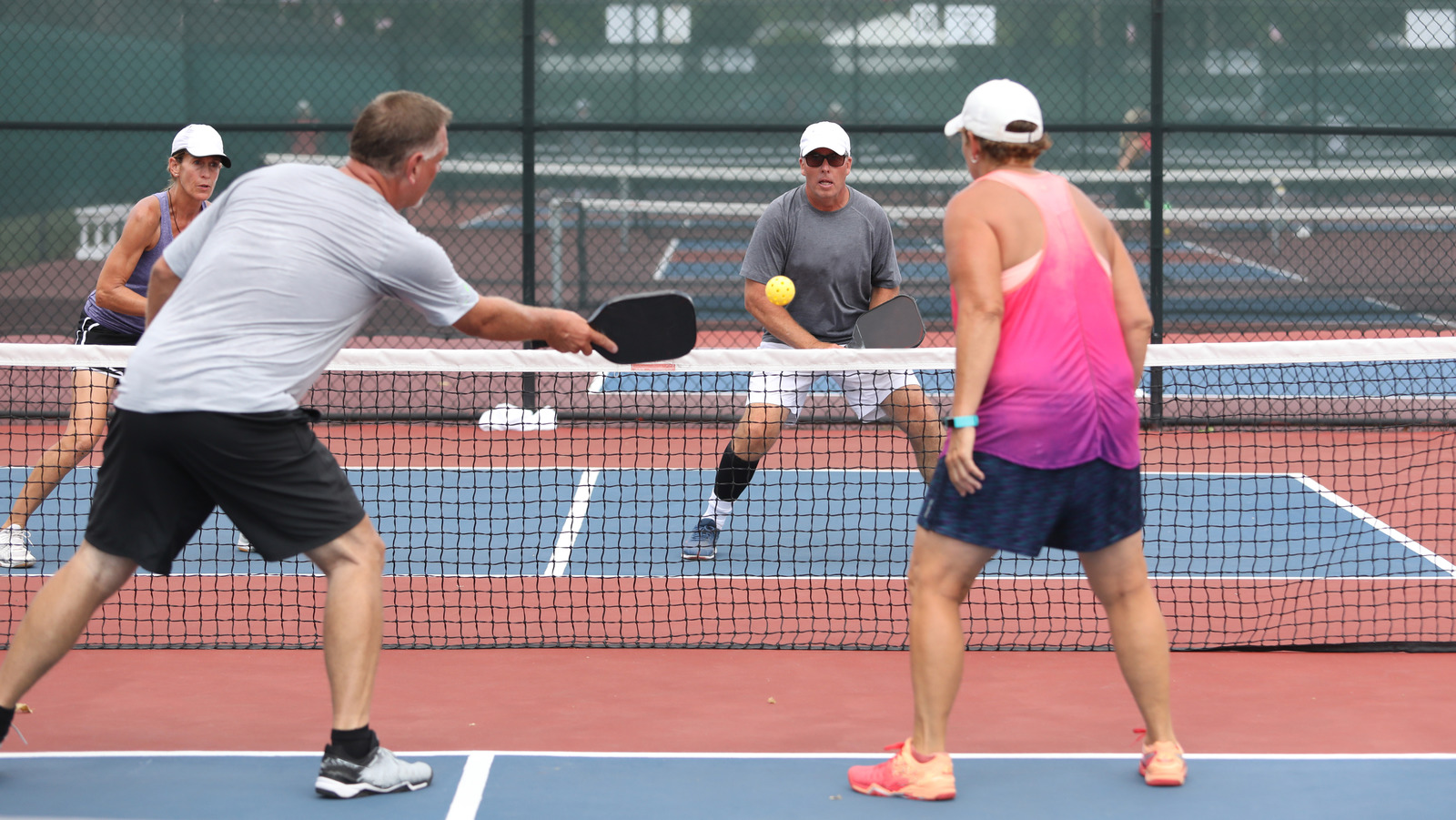I. Introduction

Learning tennis as a beginner can be an incredibly rewarding experience. Not only does it offer numerous physical fitness benefits, but it also has a positive impact on mental well-being.
When starting to learn tennis, it’s important to understand the significance of the sport. Tennis helps in improving cardiovascular health, increasing strength and endurance, enhancing agility and coordination, and promoting overall fitness. Moreover, it’s a great way to relieve stress, improve focus and concentration, and boost self-confidence.
II. Getting Ready: Preparation and Equipment
A. Choosing the Right Equipment
- Selecting the right tennis racket: When choosing a tennis racket, factors such as weight, grip size, and head size should be considered. It’s important to visit a sporting goods store and try out different rackets to find the one that feels comfortable and suits individual playing style.
- Understanding different types of tennis balls: Tennis balls come in different types, such as regular, pressureless, and beginner balls. Beginners usually start with low-pressure or beginner balls, as they are slower and easier to control.
B. Dressing for Success
- Recommended attire and footwear: Tennis players should wear comfortable clothing, such as moisture-wicking shirts and shorts or skirts. It’s also important to wear proper tennis shoes with good traction and ankle support to prevent injuries.
- Importance of proper clothing and footwear: Wearing the right clothing and footwear ensures comfort and performance on the court. It helps in preventing blisters, sore feet, and unnecessary distractions, allowing players to focus on their game.
III. Basic Techniques and Fundamentals
A. Grip and Stance
- Exploring different types of tennis grips: There are various types of tennis grips, including Eastern, Western, and Continental grips. Each grip has its own advantages and is suitable for different types of shots and playing styles.
- Understanding proper footwork and positioning: Footwork and positioning are vital in tennis. Players should learn to move efficiently on the court, maintain balance, and position themselves correctly to execute shots effectively.
B. The Basic Groundstrokes
- Forehand Stroke: The forehand stroke is one of the fundamental shots in tennis. It’s crucial to have a proper grip and technique for forehand shots, focusing on body positioning, swing mechanics, and follow-through.
- Backhand Stroke: There are different types of backhand grips, such as the Eastern, Continental, and Two-Handed grips. Understanding the fundamentals of the backhand stroke, including proper footwork, shoulder rotation, and racquet head positioning, is essential for mastering this shot.
IV. Serving and Return
A. The Serve
The serve is one of the most important shots in tennis, as it sets the tone for the point and gives the server an opportunity to take control of the game. A consistent and effective serve can increase your chances of winning matches. Here is a step-by-step guide to mastering the serve technique:
- Grip and Stance
- Start with a continental grip, where the base knuckle of your index finger rests on the second bevel of the racket handle.
- Stand sideways to the net with your feet shoulder-width apart. Your front foot should be pointing towards the net, while your back foot is perpendicular to the baseline.
- Ball Toss
- Hold the ball in your non-dominant hand, slightly cupping it.
- Toss the ball high enough, allowing it to reach its peak just above your head. The ideal toss height is around 12 to 18 inches above your hitting zone.
- Wind-up and Racquet Drop
- As the ball reaches its peak, use your non-dominant arm to raise the racket up behind you.
- As you bring the racket forward, let your elbow drop and your wrist cock back. This motion will generate racquet head speed for a powerful serve.
- Contact and Follow-through
- As the ball begins to descend, shift your weight onto your front foot and explode upward using your legs and core.
- Make contact with the ball at a point slightly in front of your body, at around the highest point.
- Keep your eyes focused on the point of contact and impact the ball with a flat racket face for a flat serve, or add spin with a closed or open racket face for a kick or slice serve.
- Follow through with the racket in a smooth motion, extending your arm and finishing high above your opposite shoulder.
B. Return of Serve

Returning serves can be challenging, as you have little time to react and need to anticipate where the ball will land. Here are some strategies for returning different types of serves:
- Analyze Your Opponent’s Serve
- Pay attention to your opponent’s serve patterns, ball toss, and body positioning. This can give you an idea of where they are likely to serve the ball.
- Observe their grip and racket preparation, which can provide clues about the type of spin they may use.
- Positioning and Footwork
- Stand around two to three feet behind the baseline to give yourself enough time to react to the ball.
- Be light on your feet and use small, quick steps to adjust your positioning and get into the best position to hit the return.
- Reactive Returns
- When facing a powerful serve, focus on getting the ball back into play rather than going for a winner. Use a shorter backswing and aim for a deep, crosscourt return to neutralize the point.
- Anticipate and Attack
- Against a slower serve or a weak second serve, anticipate the direction and add aggression to your return. Look for opportunities to hit the ball early and take control of the point.
V. Playing the Game: Tactics and Strategies
A. Understanding the Court and Scoring

To succeed in tennis, it is important to have a good understanding of the court dimensions and markings, as well as the basic scoring rules. Familiarize yourself with the following:
- Court Dimensions
- The tennis court is 78 feet long and 36 feet wide for doubles matches. For singles matches, the width remains the same, but the length is reduced to 78 feet.
- Court Markings
- The court is divided into two equal halves by the net. Each half is further divided by service lines and singles sidelines.
- Scoring
- Tennis matches are typically played in a best-of-three sets format, or in major tournaments, best-of-five sets.
- The traditional scoring system is as follows: Love (0), 15, 30, 40, and Game.
- Deuce is used when both players or teams have a score of 40.
- Advantage-in (Ad-in) means the server has an advantage, while advantage-out (Ad-out) means the receiver has an advantage.
- To win a set, you must win at least six games with a margin of two games.
B. Singles Tactics

Singles play requires strategic shot selection and effective court positioning to maximize your strengths and exploit your opponent’s weaknesses. Consider the following tactics:
- Identify the Weaknesses
- Observe your opponent’s playing style and identify their weaker shots. This will help you plan your strategy and target their vulnerabilities.
- Play to Your Strengths
- Focus on your own game and play to your strengths. If you have a strong forehand, look for opportunities to hit winners from that side. If you have good speed, use your movement to retrieve shots.
- Mix Up the Pace and Direction
- Vary the pace of your shots and mix up the direction to keep your opponent off balance. Use change-of-pace shots, drop shots, and angles to disrupt their rhythm.
- Exploit the Court
- Take advantage of the entire court. Use the angles and corners to force your opponent to cover more ground. Open up the court by hitting deep shots to the corners and follow up with aggressive shots.
VI. Conclusion
By mastering the serve and return, as well as understanding the tactics and strategies of singles and doubles play, beginners can begin to develop a strong foundation in tennis. Practice and consistency are key to improving your skills and becoming a proficient player. Remember to enjoy the journey, embrace the challenges, and continue to refine your game. With dedication and effort, you’ll progress from a beginner to a confident and competitive tennis player.

